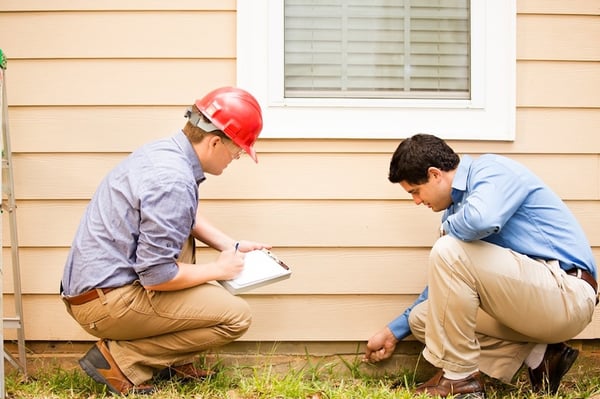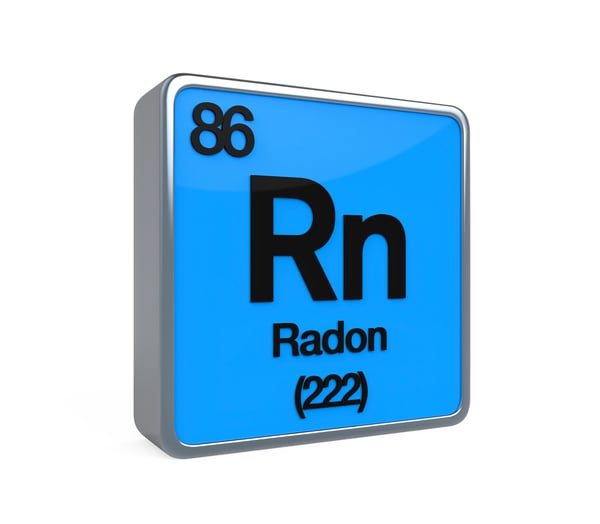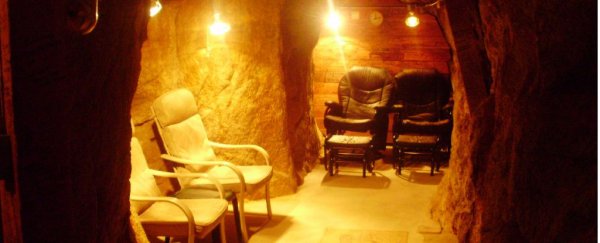People are becoming more and more health conscious with every passing year.
Good health and longevity have become a priority for many people, and they will go to great lengths to achieve it.
Cigarette smoking, once a status symbol among the "cool" and "hip," is now all but demonized.
Most indoor establishments have banned it, college campuses have made it illegal to have a cigarette altogether, and you rarely ever see anyone smoke a cigarette in TV or movies anymore.
There's a new fad diet that pops up every couple of weeks, whether it's plant-based, paleo, whole30, weight watchers, or one of the many, many others.
Exercising has never been more in demand. The rise of the "fitness entrepreneur" is proof of that.
People won't go near things that have been proven to cause cancer and for a good reason. No one wants cancer.
If something is known to be a carcinogen, it must come with a warning, or there could be grounds for a lawsuit.
But what if I told you there's a place in Montana where people willingly expose themselves to high levels of carcinogens.
They are willing to breathe in air and drink water full of the second leading cause of lung cancer in America.
I'm talking about radon, and there's a place in Montana where people pay to inhale and drink radon.
Sounds crazy, but it's real.
We'll learn more about it in the article below.
Radon is not just a threat to those who spend times in caves. Radon in the home is a serious problem. For more information, read our blog post "The Connection Between Radon and Real Estate." here.
Table Of Contents
What Is Radon
Radon is a naturally-occurring, radioactive gas that can cause lung cancer.
Radon gas is inert, colorless, and odorless, and cannot be detected by humans without certain tools or instruments.
Outdoors, radon disperses rapidly, and, generally, is not a health issue.
Most radon exposure occurs inside homes, schools, workplaces, or even old mines.
Radon gas becomes trapped in a small space after it enters buildings through cracks and other holes in the foundation.
Radon can be controlled and managed indoors using proven, cost-effective techniques, such as radon mitigation systems.
Breathing enough radon over time significantly increases your risk of lung cancer.
Radon is the second leading cause of lung cancer in the United States, behind only cigarettes.
The EPA estimates that about 21,000 people every year die from radon-related lung cancer in America.
If you're worried about the radon levels in your home, there are steps you can take to reduce and control the levels of radon that seep into your home.
The only way to find out if your home has radon is to get it tested by a professional.
There are do-it-yourself testing kits, but when you're dealing with something as serious as lung cancer, you want to leave it in the hands of the professionals.
If it is found that the radon levels in your home are high, a certified radon service professional, typically the same one that tested your home, can lower the levels.
Radon problems are usually fixed using a mitigation system, underground ventilation system, or by increasing the rate of air changes in the building.
The Radon Tourists
After learning all of that, you must be thinking there is no way anyone would willingly expose themselves to radon, knowing it can cause lung cancer and kills about 21,000 people a year.
But, some people do just that.
Recently, Wendy MacNaughton, a graphic journalist, visited Montana to sit inside decommissioned gold, silver, and uranium mines.
She met people that traveled thousands of miles to the towns of Basin and Boulder in Montana to sit in those decommissioned mines to soak up as much radon as possible.
While most of us do all we can to avoid carcinogens, they were traveling to them and paid $15 for a day pass to do it.
They also drank from bottles filled with radon water, which were completely free during their trip.
The tourists would huddle inside one of the four cold, abandoned caves for an hour a time, three to four times a day, for up to 10 days.
The goal is to soak up as much radon gas as possible.
Their reasoning?
They hoped that the radon water and gas would cure them of the ailments that their doctors couldn't.
Some of the more common ailments people were trying to cure in the mines were:
- Arthritis
- Gout
- Fibromyalgia
There was even a dog in one of the caves, hoping to cure his allergies.
People from all over the world and all different types of backgrounds met up in the same place hoping to achieve the same goal.
Christians from Arizona, Amish, and Mennonites from Missouri, tourists from Korea, a family of four from Seattle, and a dermatologist from San Diego.
People who would have never otherwise met shared the stories of their medical hardships and formed unlikely friendships.
When Wendy left the mine, she ran a Geiger counter, a device that detects radiation levels, across her body.
The results were off the charts.
It's unfortunate that there's not a follow-up study of the mortality of the people who have visited the mines for treatments over the past decades.
Admittedly, it would be a difficult study to organize because of the challenges of maintaining contact with and monitoring the mortality status of the individuals who visited the mines from all over the world.
It would have been interesting to see how many people did actually develop lung cancer without any idea that they developed it due to their time in the coal mines.
Radon Is Not Safe
The niche business of "radon tourism" started in the 1950s when little was known about the health effects of radon.
This suggests that there are most likely thousands of people who were exposed to levels of radon that were several orders of magnitude higher than the EPA's recommended limit of 4 picoCuries/liter
There are no proven health benefits of radon.
The only thing that has been found is that exposure to radon increases your risk of lung cancer.
That means a good portion of the people who visited the mines since they opened in the 1950s contracted, and died from, lung cancer they developed during their time in the mines.
No matter what you're trying to cure, whether it be allergies, arthritis, or anything else, radon is not going to cure it.

Make Sure You Aren't Being Exposed To Radon
Unlike the tourists in Montana, you need to be sure you stay as far away from unsafe radon levels as possible.
As we touched on earlier, the only way to be sure you're home is free of elevated levels of radon is to have it tested professionally.
The experts at Radon Eliminator will do just that, and if necessary, they will install a mitigation system to restore the radon levels to a safe reading.
You don't want to wait too long to do this; the health of you and your family could be at risk.
Click the button below to get started.







